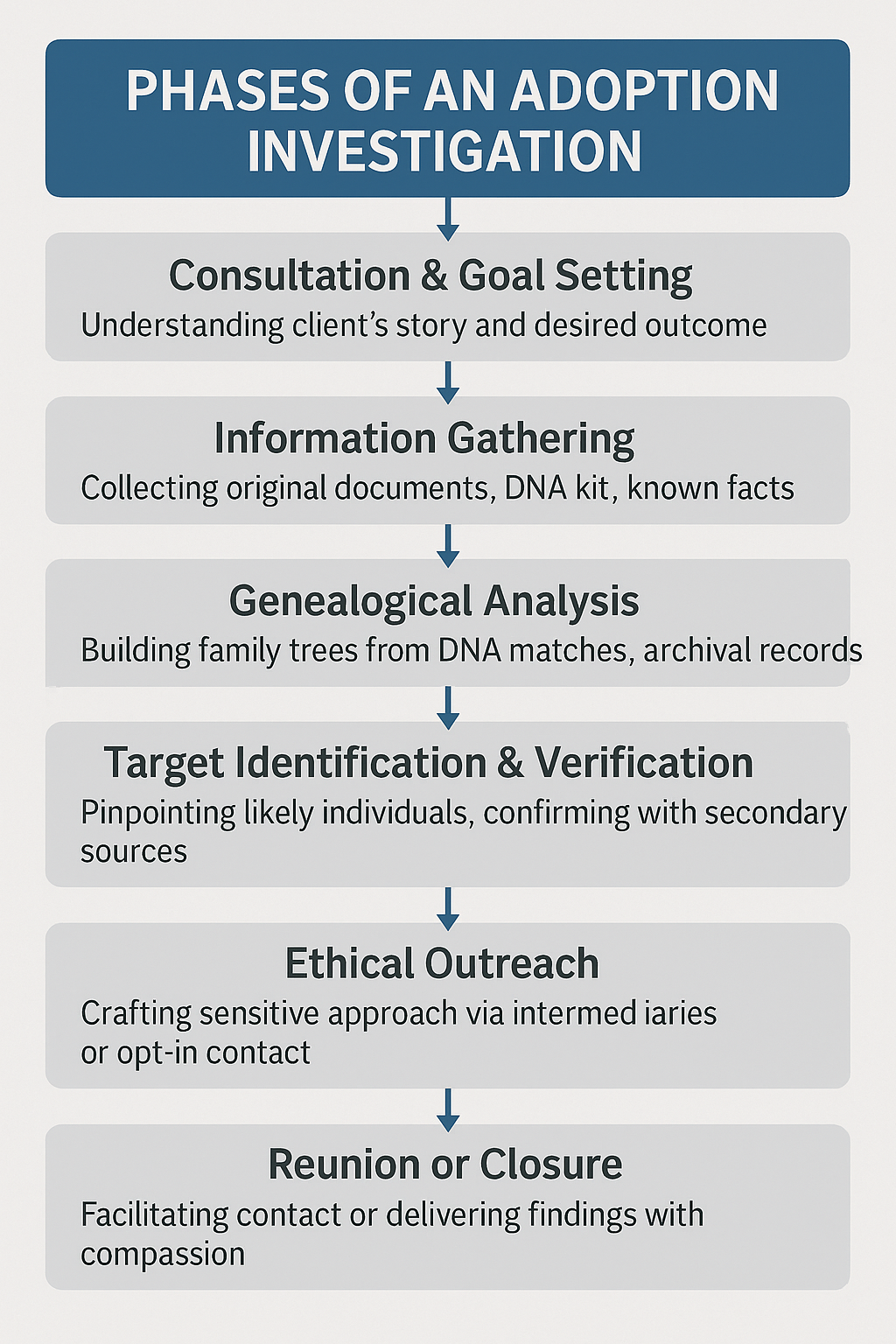Adoption searches once relied on yellowed courthouse files and handwritten agency logs. Today, they’re powered by multi-terabyte DNA databases, AI-assisted family-tree builders, and social-media breadcrumbs no filing cabinet could hold. At F3 Investigations, we’ve embraced these tools—while keeping privacy and compassion at the center—to reunite families across continents and generations.
Why Demand Is Surging
Ancestry-testing kit sales topped 40 million worldwide last year [1], and 67 percent of adoptees say they’ve used—or plan to use—DNA services to learn about biological relatives [2]. Meanwhile, 32 states now grant adult adoptees some access to original birth certificates [3]. The result? Record-high inquiries from adoptees, birth parents, and adoptive families seeking answers.
Modern Toolkit for Adoption Investigations
 DNA & Genetic Genealogy – Saliva swabs identify second-cousin matches; triangulated trees point to likely birth parents. MIT researchers report a 58 percent success rate when DNA is paired with classic genealogy [4].
DNA & Genetic Genealogy – Saliva swabs identify second-cousin matches; triangulated trees point to likely birth parents. MIT researchers report a 58 percent success rate when DNA is paired with classic genealogy [4].
Digitized Court & Agency Files – County clerks and agencies are scanning sealed dockets; targeted requests now yield searchable PDFs in days instead of months.
Social-Media & OSINT – A maiden name in a 1980s yearbook or a public baby announcement on Facebook can confirm the last puzzle piece.
Ethical Contact Protocols – First contact is discreet and opt-in, following guidelines from the American Adoption Congress [5].
Navigating the Journey: Managing Emotional Expectations
Finding an answer is only part of the process; being ready for that answer is just as critical. From day one we talk through every possible outcome—joyful reunion, a request for privacy, or revelations that reshape family narratives. Our investigators are trained in trauma-informed communication and can connect clients with counselors and support groups. We aim to deliver facts and the context and care needed to process them, so each client feels respected, prepared, and never alone.
Success Snapshot: “Operation Parallel Lines”
A client adopted in 1989 had only a first name on a sealed birth record. A DNA match led us to a second cousin in Canada. By overlaying that cousin’s tree with hospital-delivery logs and a 1990 high-school yearbook, we isolated one likely birth mother. A carefully worded letter led to a video call where a mother and son saw each other’s faces for the first time in 34 years—a tearful reunion that closed a lifetime of questions, all in just seven weeks.
How We Can Help
Whether you’re an adoptee searching for roots, a birth parent hoping for closure, siblings separated by adoption wishing to connect, or an adoptive family seeking a complete medical history, our mix of DNA science, archival research, and compassionate outreach turns hope into answers—and often, into hugs.
Reference List
- MIT Technology Review. “Genetic Genealogy Market Size Report 2025.” https://www.technologyreview.com
- Child Welfare Information Gateway. “Adoptee Use of DNA Testing: National Survey 2024.” https://www.childwelfare.gov
- National Conference of State Legislatures. “State Birth Certificate Access Laws for Adult Adoptees (2025 Update).” https://www.ncsl.org
- MIT Innovation Review. “The Power of Triangulation: DNA + Genealogy in Family Reunification.” https://www.mit.edu/innovation-review
- American Adoption Congress. “Ethical Guidelines for Search and Reunion” (2024). https://www.americanadoptioncongress.org